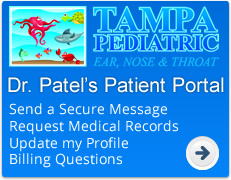|
|
 |
|||||||
Vocal Cord ParalysisVocal cord paralysis is a voice disorder that occurs when one or both of the vocal cords (or vocal folds) do not open or close The vocal cords are two elastic bands of muscle tissue located in the larynx (voice box) directly above the trachea (windpipe). The vocal cords produce voice when air held in the lungs is released and passed through the closed vocal cords, causing them to vibrate. When a person is not speaking, the vocal cords remain apart to allow the person to breathe. Someone who has vocal cord paralysis often has difficulty swallowing and coughing because food or liquids slip into the trachea and lungs. This happens because the paralyzed cord or cords remain open, leaving the airway passage and the lungs unprotected. What causes vocal cord paralysis?Vocal cord paralysis may be caused by head trauma, a neurologic insult such as a stroke, a neck injury, lung or thyroid cancer, a tumor pressing on a nerve, or a viral infection. In older people, vocal cord paralysis is a common problem affecting voice production. People with certain neurologic conditions, such as multiple sclerosis or Parkinson's disease, or people who have had a stroke may experience vocal cord paralysis. In many cases, however, the cause is unknown. What are the symptoms?People who have vocal cord paralysis experience abnormal voice changes, changes in voice quality, and discomfort from vocal straining. For example, if only one vocal cord is damaged, the voice is usually hoarse or breathy. Changes in voice quality, such as loss of volume or pitch, may also be noticeable. Damage to both vocal cords, although rare, usually causes people to have difficulty breathing because the air passage to the trachea is blocked. How is vocal cord paralysis diagnosed?Vocal cord paralysis is usually diagnosed by an otolaryngologist-a doctor who specializes in ear, nose, and throat disorders. Noting the symptoms the patient has experienced, the otolaryngologist will ask how and when the voice problems started in order to help determine their cause. Next, the otolaryngologist listens carefully to the patient's voice to identify breathiness or harshness. Then, using an endoscope--a tube with a light at the end--the otolaryngologist looks directly into the throat at the vocal cords. A speech-language pathologist may also use an acoustic spectrograph, an instrument that measures voice frequency and clarity, to study the patient's voice and document its strengths and weaknesses. How is vocal cord paralysis treated?There are several methods for treating vocal cord paralysis, among them surgery and voice therapy. In some cases, the voice returns without treatment during the first year after damage. For that reason, doctors often delay corrective surgery for at least a year to be sure the voice does not recover spontaneously. During this time, the suggested treatment is usually voice therapy, which may involve exercises to strengthen the vocal cords or improve breath control during speech. Sometimes, a speech-language pathologist must teach patients to talk in different ways. For instance, the therapist might suggest that the patient speak more slowly or consciously open the mouth wider when speaking. Surgery involves adding bulk to the paralyzed vocal cord or changing its position. To add bulk, an otolaryngologist injects a substance, commonly Teflon, into the paralyzed cord. Other substances currently used are collagen, a structural protein; silicone, a synthetic material; and body fat. The added bulk reduces the space between the vocal cords so the nonparalyzed cord can make closer contact with the paralyzed cord and thus improve the voice. Sometimes an operation that permanently shifts a paralyzed cord closer to the center of the airway may improve the voice. Again, this operation allows the nonparalyzed cord to make better contact with the paralyzed cord. Adding bulk to the vocal cord or shifting its position can improve both voice and swallowing. After these operations, patients may also undergo voice therapy, which often helps to fine-tune the voice. Treating people who have two paralyzed vocal cords may involve performing a surgical procedure called a tracheotomy to help breathing. In a tracheotomy, an incision is made in the front of the patient's neck and a breathing tube (tracheotomy tube) is inserted through a hole, called a stoma, into the trachea. Rather than breathing through the nose and mouth, the patient now breathes through the tube. Following surgery, the patient may need therapy with a speech-language pathologist to learn how to care for the breathing tube properly and how to reuse the voice.
|
| Home Page | ENT Specialty Services | Meet Our Physicians & Staff | Contact Us |

 properly. Vocal cord paralysis is a common disorder, and symptoms can range from mild to life threatening.
properly. Vocal cord paralysis is a common disorder, and symptoms can range from mild to life threatening.